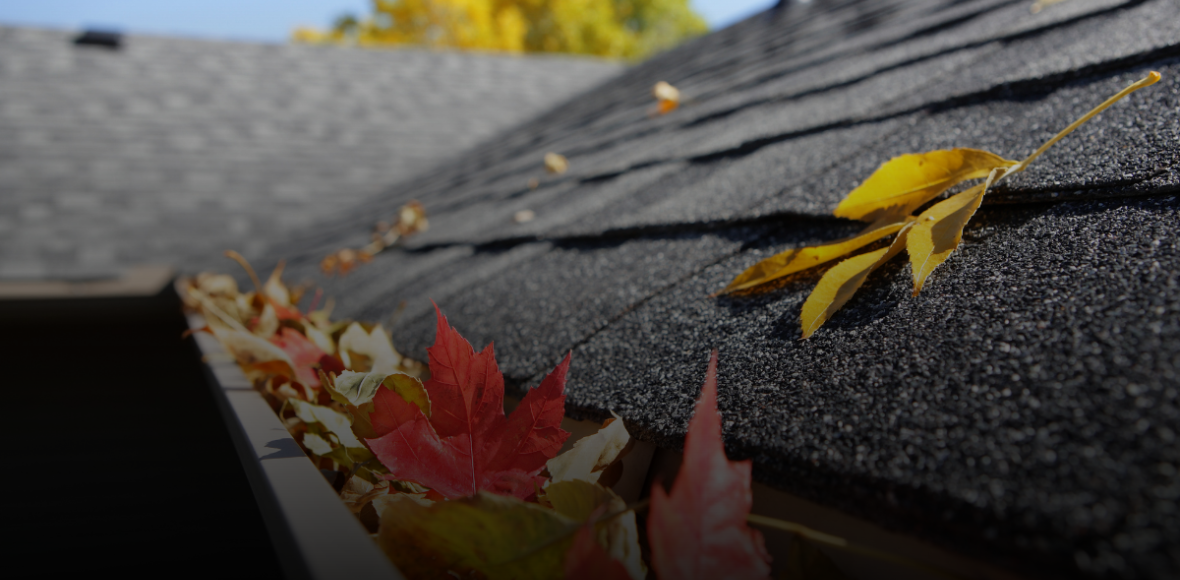
Prevent structural damage! Fall commercial gutter cleaning is vital to clear debris, stop clogs, and avoid ice dams, protecting your roof and foundation.
The arrival of autumn’s vivid hues also heralds the arrival of a crucial chore for all commercial property managers: cleaning the gutters. This is a crucial preventative maintenance measure that protects your significant roof investment from the serious and expensive damage that winter weather can cause; it’s not just about curb appeal. Fall gutter neglect for your business can result in a cascade of structural problems, ranging from weakened roofing to a damaged foundation.
Commercial Gutters’ Crucial Function
In order to divert large amounts of water, commercial roofing systems—particularly flat or low-slope designs—heavily rely on their drainage system, which includes internal drains, downspouts, and gutters. The accumulation of dust, shingle grit, leaves, and other debris causes this vital system to malfunction. When clogs obstruct normal water flow, water backs up, collects on the roof, and seeps into weak spots.
This standing water, sometimes referred to as “ponding,” adds excessive weight and generates a large live load that may put stress on the roof structure. More importantly, accumulated water freezes and expands when temperatures drop, which can cause membrane damage, structural cracks, and the creation of damaging ice dams. Your best line of defense against these risks is proactive fall commercial gutter maintenance.
Find out more about our expert roof and gutter maintenance services for businesses right now!
Crucial Actions for Maintaining Fall Gutter
Your commercial maintenance schedule should prioritize a comprehensive fall cleaning and inspection procedure. Professionals take the following actions to get your building ready for the winter:
The roof surface needs to be cleared before working on the gutters themselves. When the first autumn rain falls, any leaves, branches, or other debris that is still on the rooftop will unavoidably wash straight into the freshly cleaned gutters. To avoid clogging the ground-level drainage, all material should be carefully removed from the roof surface using soft-bristle brushes or commercial-grade blowers.
The main step in the procedure is carefully clearing away all accumulated debris. This usually calls for specialized equipment for commercial buildings, which frequently have large-capacity gutters. Heavy, mucky buildup is removed by expert teams using industrial gutter-cleaning systems, powerful vacuums, or scoops. Water should be run through the gutters and downspouts after all solids have been removed in order to remove any remaining fine sediment and ensure that water is flowing freely away from the building. It is urgent to address any indications of a partial or complete downspout blockage.
Cleaning offers the ideal setting for both a tactile and visual examination. The gutter may pull away from the fascia, changing its pitch and impeding adequate drainage, so technicians look for loose or corroded fasteners. In order to prevent leaks onto walls, windows, and the building’s foundation, they also check for rust, holes, or separated seams. Small fixes, such as tightening brackets or caulking seams, are frequently made immediately to stop a minor issue from developing into an expensive leak.
Did You Know?
On a flat commercial roof, one inch of standing water increases the live load by about five pounds per square foot, putting stress on the entire structure. This needless stress is avoided with routine commercial roofing inspection and maintenance.
Guarding Against Winter Hazards
Ice dams and structural water infiltration, two of the most destructive winter hazards, are directly addressed by fall cleaning.
How to Avoid Ice Dams: When snow melts on the roof due to heat escaping from the building, ice dams are created. The water, which is frequently caught by clogged gutters, then flows to the chilly roof edge where it refreezes. Water is forced backward, beneath the roofing material, by this cycle, resulting in rotting deck boards, damaged insulation, and serious interior leaks. The first line of defense against these destructive formations is clear gutters.
Protecting the Foundation: Large volumes of runoff are concentrated at the base of your building due to clogged gutters, which cause water to spill over the sides. This extreme saturation weakens the foundation over time, erodes the soil, and may cause shifting or flooding in the basement. You are safeguarding your foundation, the most costly part of your property to fix, by maintaining a clean and functional gutter system.
Protect Your Business Property with the Professionals
Maintaining commercial gutters can be challenging, particularly for multi-story structures. It calls for specific safety gear, familiarity with commercial roofing systems, and attention to detail. Avoid taking the chance of a ladder mishap or an unfinished task that might require expensive winter repairs.
For a consultation, give (201) 389-2791 a call to Allied Roofing and Construction. To guarantee that your business roof is completely shielded from the weather this winter, our skilled staff offers comprehensive fall gutter cleaning, inspection, and repair services.
Frequently Asked Questions (FAQs)
In the fall, how frequently should I clean my business gutters?
Commercial properties with heavy tree cover often benefit from two cleanings: one in early fall to remove summer debris and a second in late fall to remove the peak leaf accumulation. However, an end-of-fall cleaning (after the majority of leaves have fallen) is still necessary. It is also strongly advised to conduct routine inspections following significant wind or precipitation events.
What indicators point to the need for expert roof and gutter repair?
Keep an eye out for signs of plant growth in the gutters, sagging or separated gutter sections, water overflowing during moderate rainfall, and water stains or peeling paint on exterior walls. Water stains on the building’s ceiling are a serious indicator of a drainage issue that could result in a commercial roof leak. Call a professional right away if you notice any of these.